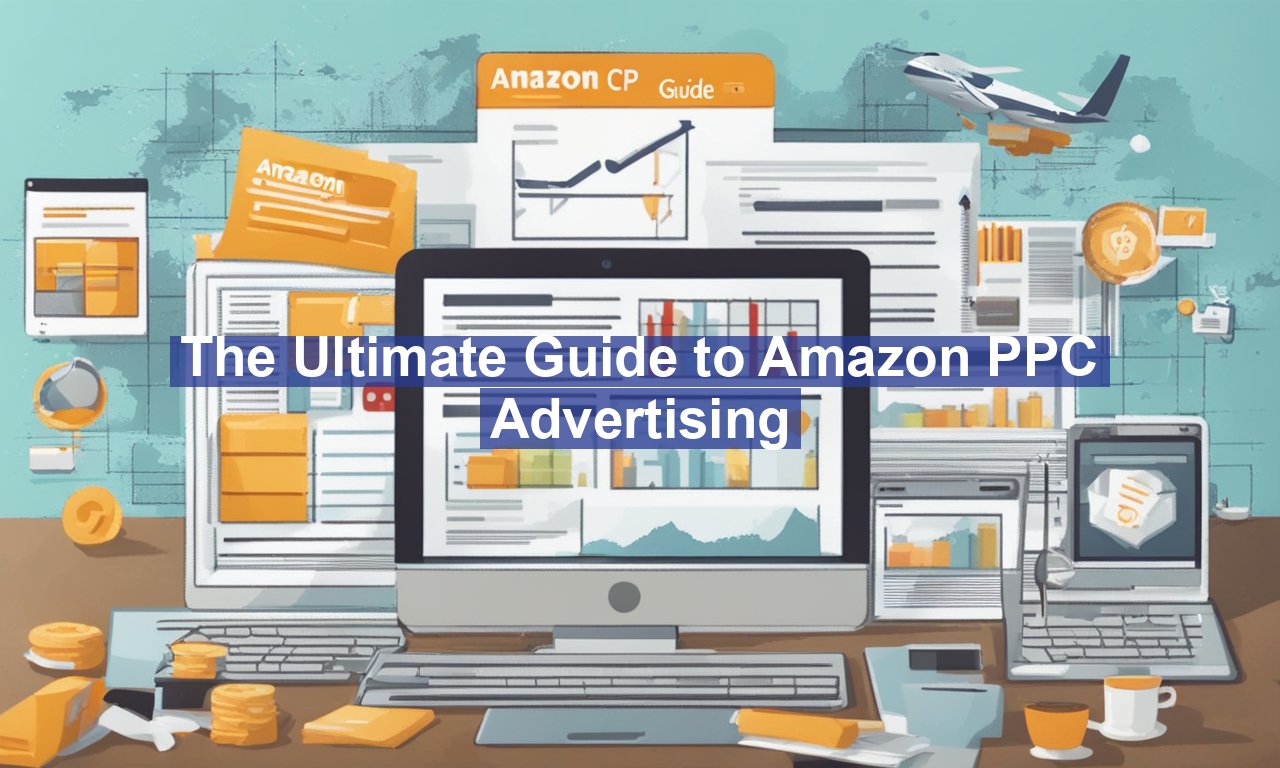The ultimate guide to Amazon PPC Advertising is an essential tool that can catalyze your e-commerce business to new heights – if done correctly. But navigating through the intricacies of pay-per-click (PPC) may, be overwhelming. Don’t worry! In this ultimate guide, we’ll break down the essentials of Amazon PPC Advertising, providing you with actionable advice to maximize your investment and boost your conversion rates.
What is The Ultimate Guide to Amazon PPC Advertising?
Amazon Pay-Per-Click Advertising is a type of advertising where you pay a fee every time someone clicks on your ad. It’s essentially buying visits to your Amazon product listings instead of earning them organically. PPC ads can be highly effective and targeted, allowing you to get in front of potential customers right when they’re ready to purchase.
Why is Amazon PPC Important?
Amazon PPC is not just a fancy marketing tool; it’s a necessity for anybody serious about succeeding on Amazon. Here’s why:
- Boosts Visibility: Even the most amazing product can get lost in a sea of competitors. Amazon pay-per-click (PPC) gives your product the spotlight it deserves.
- Increases Sales: Ultimately, increased visibility can lead to more sales. And with strategic targeting, these can be high-intent clicks.
- Drives Organic Rankings: Sales driven by PPC can directly impact your organic rankings on Amazon, making it easier for customers to find you without clicking an ad.
Types of Amazon PPC Ads
Understanding the types of ads is the first step in a successful campaign. Here are the main types of Amazon pay-per-click ads:
Sponsored Products
These are the most common & straightforward type of PPC ads on Amazon. Sponsored Products ads promote separate product listings on (AMZ). They appear on search results pages & product detail pages.
Best used for:
- Promoting individual products
- Boosting visibility and sales
Sponsored Brands
These advertising display your brand logo, a custom heading, & up to three products. They appear in search results, usually at the top, and can capture significant attention.
Best used for:
- Building brand awareness
- Showcasing product range
Sponsored Display
These ads target relevant audiences both on & off Amazon (AMZ), reaching potential customers based on their shopping behaviors.
Best used for:
- Retargeting past visitors
- Driving product awareness
How to Set Up an Amazon PPC Campaign
Setting up a successful Amazon pay-per-click (PPC) campaign involves several key steps:
1. Define Your Goals
Whether it’s brand awareness, direct sales, or market research, having clear goals will guide your campaign strategy.
2. Conduct Keyword Research
Using tools like Amazon’s Keyword Planner or third-party tools like Helium 10 and Jungle Scout can provide invaluable insights for keyword research. Long-tail keywords may often provide more targeted traffic at a low cost.
3. Choose Your Ad Type
As mentioned, depending on your goals, you’ll select from Sponsored Products, Sponsored Brands, or Sponsored Display ads.
4. Set a Budget and Bids
You need to determine how much you’re willing to spend per click (CPC) and set a daily or campaign budget. Having a flexible budget can be advantageous as you may scale up successful campaigns.
5. Monitor and Adjust
A successful PPC campaign is never set-and-forget. Regular monitoring & tweak based on performance data is crucial.
Advanced Strategies for Amazon PPC
Once you’ve got the basics down, it’s time to optimize and scale. Here are some advanced strategies:
- Negative Keywords
Negative keywords prevent your ads from showing up for irrelevant searches, which can save you money and make your campaigns more efficient. - Dayparting
This involves running your ads during specific times of the day when they are most effective. For example, running ads during peak shopping hours can lead to higher conversions. - Automate Campaigns
Using tools like Sellics or Teikametrics can automate much of the campaign management, from bid adjustments to keyword management, saving you time and increasing efficiency.
Common Pitfalls and How to Avoid Them
Amazon PPC can be incredibly rewarding, but it also comes with its challenges. Here are normal pitfalls & how to avoid them:
Ignoring Long-tail Keywords
While broad keywords are important, long-tail keywords often offer better conversion rates because they are more specific and have less competition.
Overlooking Negative Keywords
Ignoring the importance of negative keywords may lead to wasted ad spend on irrelevant clicks.
Failure to Monitor Campaigns
As mentioned before, setting and forgetting a campaign can lead to inefficiencies. Regular monitoring & coordination based on performance data are crucial.
Resource for Further Reading:
- Amazon Advertising: Seller University provides a wealth of information for anyone looking to get started.
- Sellics: The Ultimate Amazon PPC Strategy Guide offers detailed insights into optimizing your PPC campaigns.
Conclusion
The ultimate guide to Amazon PPC Advertising can be a powerful tool when executed correctly. By understanding the different types of PPC ads, setting clear goals, conducting thorough keyword research, and continuously optimizing your campaigns, you can achieve significant boosts in visibility, sales, and organic ranking.
Happy selling!


